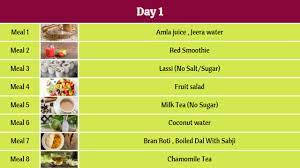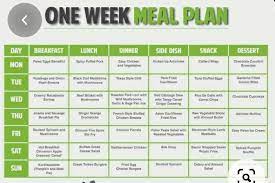The 7-Day GERD Diet Plan

7 Day Diet Plan To Lose 5KG
Gastroesophageal Reflux Disease (GERD) is a mutual digestive condition that can issues worry and irritation due to the backflowing of stomach acid into the throat. While medication can help control GERD symptoms, suppose a good diet can be a powerful tool in controlling and improving the form. In this article, we’ll describe a 7-day GERD diet plan designed to decrease symptoms and help better digestive health.

Significance of Dietary Control:
The significance of dietary control cannot be excessive when it comes to control GERD (Gastroesophageal Reflux Disease). A carefully curated diet can play a important role in improving the rough symptoms of acid reflux, such as indigestion and vomiting. By choosing foods that are less likely to induction acid reflux and encouraging proper eating habits, individuals with GERD can understanding relief and better overall digestive health. This dietary control not only decrease the discomfort related with GERD but also helps in preventing potential problems over the long term, highlighting the Significanceof making informed dietary choices as a important part of GERD management.

If you want to know about 7 Day Diet Plan To Lose 5KG then you are at right page because we provide this information in more detail for further details click the link given below.
What Is a GERD-Friendly Diet?
A GERD-friendly diet is a way of eating that helps people with stomach acid troubles feel better. It includes foods like lean meats and non-citrus fruits while avoiding things like spicy or acidic foods that can make the problem worse. It also involves eating smaller meals and staying upright after eating to reduce discomfort.
With the GERD diet, you can:
- Avoid foods and drinks that make heartburn worse.
- Opt for foods that can help control stomach acid production.
- Develop eating habits that reduce your symptoms.
- Include a kind of healthy, nutrient-rich foods to control a healthy weight.
Day 1:
Breakfast
- Oatmeal with sliced bananas
- Almond milk (low-fat)
- Whole-grain toast
- Freshly squeezed orange juice
Lunch
- Grilled chicken breast
- Steamed broccoli
- Brown rice
- Mixed green salad with olive oil and balsamic vinegar dressing
Dinner
- Baked salmon
- Quinoa
- Roasted asparagus
- Sliced watermelon for dessert
Day 2:
Breakfast
- Greek yogurt with honey
- Whole-grain cereal
- Sliced strawberries
- Herbal tea (e.g., chamomile)
Lunch
- Carrot sticks with hummus
- Mixed berry smoothie (no citrus fruits)
Dinner
- Lean beef stir-fry with lots of vegetables (broccoli, bell peppers, snap peas)
- Brown rice
- Sliced cantaloupe for dessert
Day 3:
Breakfast
- Scrambled eggs (cooked with minimal oil)
- Whole-grain toast
- Fresh orange segments
- Green tea
Lunch
- Tuna salad with mixed greens
- Whole-grain crackers
- Sliced cucumbers
Dinner
- Grilled shrimp with quinoa
- Steamed spinach
- Sliced pineapple for dessert
Day 4:
Breakfast
- Smoothie with spinach, banana, and almond milk (no citrus fruits)
- Whole-grain muffin
Lunch
- Lentil soup
- Whole-grain roll
- Sliced bell peppers
Dinner
- Roast chicken breast
- Mashed sweet potatoes
- Steamed green beans
Day 5:
Breakfast
- Cottage cheese with pear slices
- Whole-grain waffles (low-fat)
- Herbal tea
Lunch
- Grilled vegetable and quinoa salad
- Low-fat yogurt
- Baby carrots
Dinner
- Baked cod with lemon and herbs
- Brown rice
- Steamed broccoli
- Sliced mango for dessert
Day 6:
Breakfast
- Banana and almond butter smoothie (no citrus fruits)
- Whole-grain toast
Lunch
- vegetable stir-fry with brown rice
- Sliced cucumber
Dinner
- Baked tofu with ginger and garlic
- Quinoa
- Sautéed kale
- Fresh blueberries for dessert
Day 7:
Breakfast
- Whole-grain pancakes with fresh berries
- Low-fat yogurt
- Herbal tea
Lunch
- Chickpea and vegetable curry
- Brown rice
- Sliced bell peppers
Dinner
- Grilled swordfish with lemon and herbs
- Steamed asparagus
- Mixed green salad with olive oil and balsamic vinegar dressing
- Sliced kiwi for dessert
Pros
1. Symptom Relief: It can significantly reduce the uncomfortable symptoms of GERD, such as heartburn and regurgitation.
2. Improved Digestive Health: Promotes better overall digestive health by reducing stomach acid reflux and irritation.
3. Preventive Measures: Helps prevent potential complications of GERD, such as esophageal damage and ulcers.
4. Better Eating Habits: Encourages healthy eating habits like portion control and choosing nutrient-dense foods.
Cons
1. Dietary Restriction: It may require avoiding some favorite foods and beverages, which can be challenging for some individuals.
2. Personal Variation: What works for one person with GERD may not work for another, as trigger foods and tolerances can vary.
3. Complexity: Keeping track of dietary choices and habits can be time-consuming and may require planning and discipline.
Conclusion:
This 7-day GERD diet plan includes a kind of nutritious, low-acid foods that can help decrease the symptoms of acid reflux and help overall digestive health. Think to avoid induction foods such as citrus fruits, tomatoes, chocolate, caffeine, and spicy dishes. Moreover, it’s important to eat smaller, more common meals, chew food carefully, and avoid lying down directly after eating to further control GERD symptoms.
Contact with a healthcare specialized or a registered dietitian before making important dietary changes, particularly if you have original health situations or are taking medication for GERD. This diet plan is an initial point, but specific dietary requirements may differ. With a stable diet, proper portion control, and routine changes, you can take positive steps to control your GERD symptoms and improving your overall well-being.






